Introduced by Peter Chen in 1976
- Entities
entity - something that can be identified in the users' work environment (something that the user wants to track); i.e. EMPLOYEE Mary Doe, CUSTOMER 12345, SALES-ORDER 1000, etc.
entity class - groups of entities of a given type; i.e. EMPLOYEE - Attributes
attribute (property) - describes a characteristic of an entity; i.e. EmployeeName, DateOfHire, JobSkillCode
attributes can be single or multiple valued (ie. courses taken); can also be composite (i.e. Address) - Identifiers
identifier attributes that name the entity instance (i.e. EmployeeID, EmployeeName)
identifiers can be unique or non unique
composite identifiers consist of more than one attribute (i.e. [FirstName, LastName, PhoneExtension]) - Relationships
relationship - association between entities
degree of a relationship - number of entities in the relationship (most relationships are binary relationships
THREE TYPE OF BINARY RELATIONSHIPS:- 1:1 - STUDENT - HIGH-SCHOOL-GRADUATED-FROM
- 1:N (1 to many) - DEPARTMENT - FACULTY
- N:M (many to many) - BOOK - AUTHOR
maximum cardinality - maximum number of elements that occur on one side of a relationship
These are examples of HAS-A relationships
ENTITY-RELATIONSHIP DIAGRAMS

minimum cardinality:- Use oval (0) to indicate that an entity is not required
- Use hash (|) to indicate that an entity must exist
- Use crow's feet (/) to indicate that an entity may have many instances
recursive relationships - relationship among entities of a single class
SHOWING ATTRIBUTES IN ENTITY-RELATIONSHIP DIAGRAMS
can be show in ellipses hanging from the ENTITY or RELATIONSHIP or listed below the ENTITY or RELATIONSHIP - Weak Entities
weak entity requires the existence of another type of entity (i.e. DEPENDENT-EMPLOYEE) and is designated by rounding the corners of the weak entity and its relationship [logical dependence]
ID-dependent entity identifier of one entity includes the identifier of another entity (i.e. BUILDING-APARTMENT, PRODUCT-VERSION, TEXTBOOK-EDITION) [physical dependence]
ambiguity: Is STUDENT a weak entity when considered with an ADVISOR? Is ORDER a weak entity when considered with SALESPERSON? Is PRESCRIPTION a weak entity with respect to PATIENT? Is ASSIGNMENT a weak entity wrt PROJECT? - Subtype Entities
subtype - entity that contains optional set of attributes and is part of a supertype [IS-A relationship]

CLIENT Contains
ClientNumber
ClientName
AmountDueINDIVIDUAL-CLIENT Contains
Address
SocialSecurityNumberPARTNERSHIP-CLIENT Contains
ManagingPartnerName
Address
TaxIDNbrCORPORATE-CLIENT Contains
ContactPerson
PhoneNbr
TaxIDNbr
Note that subtypes can inherit attributes from their supertype - Documentation of Business Rules (constraints are not part of E-R Diagram, but need to be documented)
- the Entity-Relationship Model and CASE Tools: EasyCase, Accelerator, etc.
- EXAMPLE 1: THE JEFFERSON DANCE CLUB
wants an IS to keep track of students and the classes they have taken; how many and which type of lessons have been taught by each teacher; be able to compute average cost per lesson for each instructor- Entities (NOUNS)
- LESSON (Private and Group)
- TEACHER (Full-time and Parttime)
- DANCE
- CUSTOMER (STUDENT)
- Relationships
- IS-A Relationship between TEACHER and FULL-TIME-TEACHER and PART-TIME-TEACHER
- HAS-A Relationships between TEACHER and PRIVATE-LESSON(2:N) and GROUP-LESSON(1:N)
- HAS-A Relationships between CUSTOMER and PRIVATE-LESSON(2:N) and GROUP-LESSON(N:M)
- HAS-A Relationship between TEACHER and DANCE((N:M)
- Final E-R Diagram
- Evaluating the E-R Data Model [Best to make modifications now)
- Who has taught which private lessons?
- Which customers have taken a private lesson from Jack?
- Who are the full-time teachers?
- Which teachers are scheduled to attend the dance on Friday?
- Entities (NOUNS)
- EXAMPLE 2: SAN JUAN SAILBOAT CHARTERS
wants an IS that keeps records of its customers and charters; keep track of equipment on the boats; keep track of personnel hired for charters; keep track of maintenance on the boats- ENTITIES
- LEASE(CHARTER)
- BOAT
- CUSTOMER
- OWNER
- EQUIPMENT
- ITINERARY/WEATHER
- PART-TIME-CREW
- SCHEDULED-MAINENANCE
- REPAIR (UNSCHEDULED-MAINTENANCE)
- REPAIR-FACILITY
- RELATIONSHIPS
- OWNER - BOAT(N:M)
- OWNER - EQUIPMENT (N:M)
- BOAT - SCHEDULED-MAINTENANCE(1:N)
- BOAT - LEASE (1:N)
- LEASE - EQUIPMENT (N:M)
- LEASE - REPAIR (1:N)
- LEASE - PART-TIME-CREW (N:M)
- CUSTOMER - LEASE (1:N)
- LEASE - WEATHER-ITINERARY (1:1)
- ENTITIES
"Does this design accurately represent the users' model of his/her environment?"